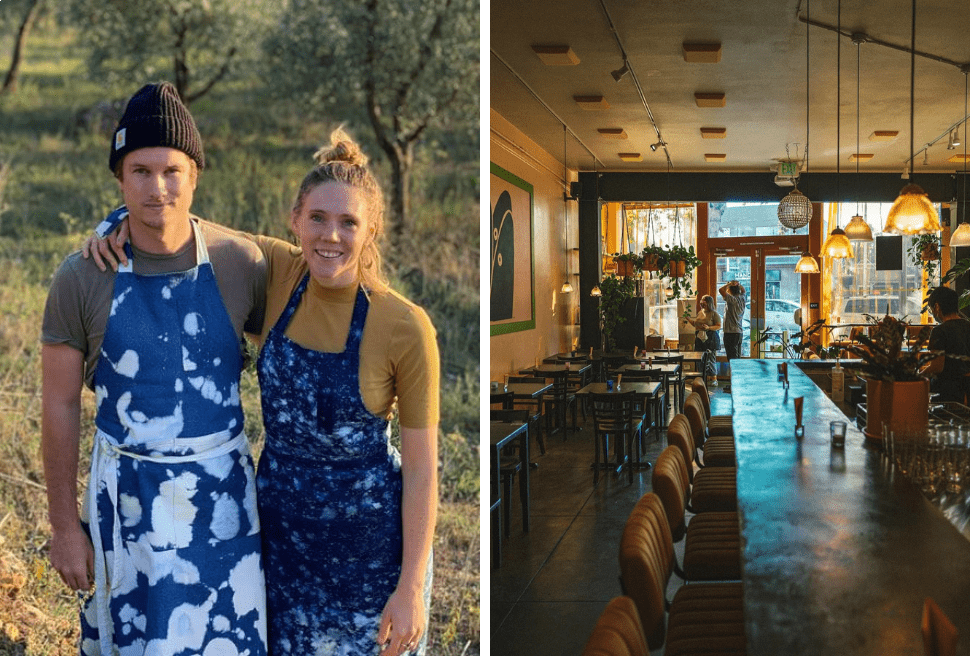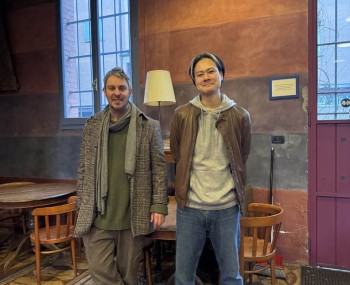From California is a virtuous example of what can be possible for the restaurant industry of the future. The new establishment is modelling joint management of hours and tips, simplification of the menu, and crucial details such as the QR code. At the center of it all is the employee, with applause from customers.
The news
From the very first moment that the restaurant industry was engulfed in the pandemic black hole, industry professionals began to wonder what would change. Now that picture is being defined. Newly opened restaurants stand as laboratories of change and provide us with windows of the future that can be appreciated and measured. Daytrip- Crediti Gabrielle Lurie-The Chronicle
Daytrip- Crediti Gabrielle Lurie-The Chronicle
The problem of problems, of course, is the workforce. Driven away by impossible hours and poor financial rewards. A new approach is beginning to prevail that puts the employee at the center, rather than the customer – although they also benefit from the change, and it is apparent in the busy phones. The approach may be shortened working hours, simplified menus, or tip management. Daytrip- crediti David Matesanz
Daytrip- crediti David Matesanz
Bon Appétit brings the example of Amanda Shulman, who opened Her Place in Philadelphia with intentions to break the mold. Before her, time was dependent on the variables of restaurant schedules and needs; now, it will be the team that would set its own plans, varied by force majeure events, and in any case on weekends, the shutters will remain lowered. This is in addition to the vacations each quarter, so that there would always be a break in sight. The goal: work-life balance. Amanda Shulman
Amanda Shulman
Then there is Daytrip in Oakland, whose owners Stella Dennig and Finn Stern started with terms that were generous, to say the least: redistribution of 20 percent of tips, a base pay of $25 (the equivalent of 25.60 euros) an hour, health insurance coverage – through a 5 percent increase in menu prices– , two weeks off and closing at 9:30 on weekends. The result was a flood of job applications, which the restaurant could not absorb. "The starting point has to be paying people enough. We knew that if we couldn't do the restaurant this way, it wouldn't be worth it." Because the employee must also be listened to, accommodated, retained, to avoid excessive turnover. Stella Dennig and Finn Stern
Stella Dennig and Finn Stern
Another option is to shorten menus, to lighten the workload of the brigade. This is the approach at Bird Pizzeria, in Charlotte, which limits itself to serving a menu of pizza pies and salads from 4 to 8 p.m. (but often finishes them earlier). Then there's Lasita in Los Angeles, a deli opened as a spin-off of the Filipino restaurant Lasa, which also chose to downshift its menu and service. Bird Pizzeria- Crediti Kenty Chung
Bird Pizzeria- Crediti Kenty Chung
Certain little details can also help lighten the workload, for example, the menu being in QR format. This avoids errors and stress for the wait staff, who can interact with the customer in a more stimulating way once relieved of basic tasks, while meal times and working hours can be reduced.
Source: Bon Appétit
Find the reference article here











